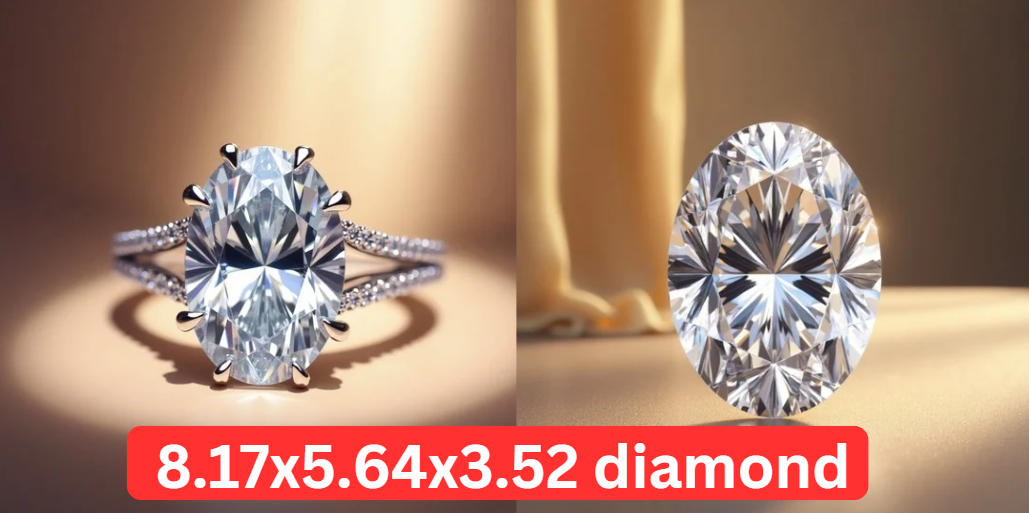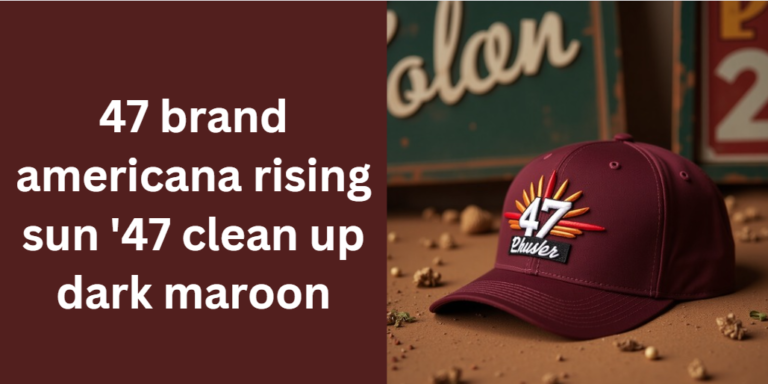Ultimate Comprehensive Guide to the 8.17×5.64×3.52 diamond: Dimensions, Carat Weight, and Buying Tips
Diamonds have long been a symbol of elegance and commitment. The 8.17×5.64×3.52 diamond is particularly noteworthy due to its precise measurements, which refer to the length, width, and depth in millimeters.
These dimensions not only define the shape of the diamond but also influence its carat weight, brilliance, and overall appearance. In this guide, we aim to demystify these numbers, explain how they relate to key quality indicators, and provide practical advice for buyers. Our goal is to offer an in-depth, actionable resource that stands out in quality and detail.
Understanding Diamond Dimensions
When we refer to the 8.17×5.64×3.52 diamond, the numbers represent its physical dimensions:
- 8.17 mm: This is the length, the longest measurement of the stone.
- 5.64 mm: The width, or the measurement at the diamond’s broadest point.
- 3.52 mm: The depth, indicating the vertical height from the top to the bottom.
These measurements are typically associated with an oval-cut diamond, which is popular due to its elegant elongated shape. The following table provides a quick overview of the dimensions and their significance:
| Dimension | Measurement (mm) | Description |
|---|---|---|
| Length | 8.17 | The longest side of the diamond |
| Width | 5.64 | The widest part of the diamond |
| Depth | 3.52 | The vertical height of the diamond |
Visual diagrams and 3D models can further clarify how these dimensions impact the stone’s appearance and how it sits in various jewelry settings.
Carat Weight and Its Correlation to Dimensions
The carat weight of a diamond is a measure of its mass, where one carat equals 200 milligrams. For the 8.17×5.64×3.52 diamond, these dimensions generally correspond to an estimated carat weight of around 1.3 to 1.4 carats. It is important to note that while the measurements offer a strong indication of size, factors such as the diamond’s cut quality can influence the final carat weight.
For example, a diamond with exceptional proportions may appear larger than one with less optimal dimensions, even if both share a similar carat weight. To help buyers understand this relationship, many online diamond calculators and charts allow you to input these measurements and receive a carat weight estimation. This tool can be invaluable when comparing different diamonds or negotiating with sellers.
Diamond Cut: Enhancing Brilliance and Beauty
The cut of a diamond is perhaps the most critical factor in determining its overall brilliance. In the case of the 8.17×5.64×3.52 diamond, the oval shape is celebrated for its ability to reflect light in a way that enhances its sparkle. A well-executed cut ensures that light is refracted and reflected optimally, giving the diamond a vibrant, eye-catching appearance.
The quality of the cut depends on several factors, including symmetry, polish, and the precise angles at which the facets are arranged. A poorly cut diamond, regardless of its size, can appear dull. In contrast, a diamond that is meticulously cut will dazzle with a superior play of light and color.
Comparing the Impact of Cut Quality
Imagine two diamonds with identical dimensions. One is expertly cut, while the other falls short in terms of proportions. The expert’s diamond will exhibit superior brilliance and fire. To illustrate this point, consider the following list:
- Expert Cut: Superior light performance, enhanced sparkle, and maximum aesthetic appeal.
- Subpar Cut: Less light reflection, resulting in a stone that appears darker and less impressive.
This comparison highlights why understanding the cut is essential when evaluating the 8.17×5.64×3.52 diamond.
Natural Diamonds vs. Lab-Grown Diamonds
Another important consideration for buyers is the choice between natural and lab-grown diamonds. Both types have their own set of advantages, and understanding these differences is crucial.
Natural Diamonds
Natural diamonds are formed over millions of years deep within the Earth. They are valued for their rarity and unique origin. For a 8.17×5.64×3.52 diamond that is natural, you can expect prices to be on the higher end due to the labor-intensive process of mining and the inherent scarcity. The uniqueness of each natural diamond adds to its allure, making every stone truly one-of-a-kind.
Lab-Grown Diamonds
In contrast, lab-grown diamonds are created in controlled environments using advanced technological processes. They offer the same physical and chemical properties as natural diamonds but are generally more affordable.
For buyers, lab-grown diamonds provide an ethical and environmentally friendly alternative without compromising on quality. They typically cost 40-50% less than natural diamonds with similar specifications.
Price Comparison Table
The following table offers a brief comparison of key aspects:
| Aspect | Natural 8.17×5.64×3.52 diamond | Lab-Grown 8.17×5.64×3.52 diamond |
|---|---|---|
| Origin | Formed naturally over millions of years | Created in controlled lab environments |
| Price Range | $8,000 to $15,000 | $3,500 to $6,000 |
| Rarity & Uniqueness | High; each stone is unique | More uniform and widely available |
| Environmental Impact | Higher due to mining processes | Lower, with reduced environmental footprint |
Pricing Factors and Market Analysis
The price of the 8.17×5.64×3.52 diamond is influenced by several interrelated factors known as the 4 Cs: Cut, Clarity, Color, and Carat Weight. Each of these elements plays a vital role in determining the overall value of the diamond.
For instance, while the dimensions provide an initial estimate of size, the clarity and color grades can further refine the price. A stone with minimal inclusions (high clarity) and a near-colorless appearance will command a premium in the market. Additionally, market trends and consumer demand can sway prices significantly over time.
When navigating the pricing landscape, it is wise to consult multiple sources and use interactive tools like diamond price calculators. These resources help demystify the pricing structure and ensure that you get the best value for your investment.
Diamond Size Comparisons
Understanding how the 8.17×5.64×3.52 diamond compares to other sizes can be very helpful, especially if you are shopping for engagement rings or other fine jewelry. Consider a scenario where you compare this diamond with a smaller oval (approximately 7.6×5 mm) or a larger oval (around 10×7 mm).
While a smaller diamond might be more budget-friendly, it may not offer the same visual impact. Conversely, a larger diamond will have a more commanding presence but will come with a significantly higher price tag.
A visual table can help summarize these comparisons:
| Diamond Size | Approximate Dimensions (mm) | Visual Impact | Price Range |
|---|---|---|---|
| Smaller Oval | 7.6 x 5 | Modest and delicate | Lower |
| 8.17×5.64×3.52 diamond | 8.17 x 5.64 x 3.52 | Balanced and elegant | Mid-range |
| Larger Oval | 10 x 7 | Bold and prominent | Higher |
These comparisons enable buyers to make informed decisions based on their aesthetic preferences and budget.
Perfect Applications: Engagement Rings and Beyond
The elegance of the 8.17×5.64×3.52 diamond makes it a popular choice for various types of jewelry, particularly engagement rings. Its dimensions offer a harmonious balance that flatters the wearer’s hand while maintaining an impressive visual presence. The elongated oval shape adds a touch of sophistication and can be paired beautifully with various ring settings.
Beyond engagement rings, this diamond is equally suitable for pendants, earrings, and bracelets. Designers often leverage its unique proportions to create pieces that exude modernity and timeless appeal. Some jewelry experts recommend using a halo setting or bezel setting to further accentuate the diamond’s natural brilliance.
Step-by-Step Guide to Evaluating and Purchasing
For those ready to make a purchase, it is essential to follow a structured approach to ensure that you are making the best investment. Begin with a comprehensive checklist that includes verifying the diamond’s certifications, understanding the 4 Cs, and comparing prices from reputable retailers. It is advisable to request detailed reports and, if possible, view the diamond in person or through high-resolution images before finalizing the purchase.
When considering where to buy, look for established jewelers and online platforms that offer transparent pricing and customer reviews. Additionally, educate yourself on common pitfalls—such as deals that seem too good to be true or sellers without proper accreditation—to avoid potential scams.
Frequently Asked Questions (FAQ)
How does the diamond’s performance change under different lighting conditions?
Different lighting environments can alter the perceived brilliance of the 8.17×5.64×3.52 diamond. Natural daylight may reveal more of its fire and scintillation, while artificial lighting can sometimes accentuate its depth and luster. Testing the diamond under multiple light sources is recommended to appreciate its full potential.
What maintenance routine is best for preserving the diamond’s sparkle over time?
To maintain the dazzling appearance of the 8.17×5.64×3.52 diamond, it is best to follow a regular cleaning schedule that includes gentle cleaning with warm water and mild soap, periodic professional inspections, and careful handling during everyday wear to prevent damage.
Are there specific jewelry settings that particularly enhance the unique characteristics of the diamond?
While the guide discussed common settings, exploring less conventional designs such as tension or floating settings can also highlight the distinctive proportions of the 8.17×5.64×3.52 diamond. Custom settings tailored to maximize light entry can further boost its brilliance.
What is the resale value outlook for this diamond compared to other sizes?
The resale value of the 8.17×5.64×3.52 diamond tends to be stable when properly certified and maintained. While market trends and individual attributes like rarity and demand can influence its value, this diamond’s balanced dimensions often ensure a favorable position in resale markets compared to more extreme sizes.
How have recent technological advances influenced the evaluation or production of diamonds with these dimensions?
Recent advancements in imaging and laser-cutting technologies have improved the precision of evaluating diamond quality. Additionally, innovations in lab-grown diamond production now allow for more accurate replication of the 8.17×5.64×3.52 diamond’s proportions, offering buyers enhanced options for consistency and value.
Conclusion
In summary, the 8.17×5.64×3.52 diamond is a remarkable stone defined by precise dimensions that enhance its brilliance and appeal. From understanding its measurements and estimating carat weight to comparing natural versus lab-grown options and evaluating market trends, this guide provides all the necessary insights for informed decision-making.
Whether you are purchasing an engagement ring or another piece of fine jewelry, the detailed information in this guide will help you navigate the complexities of the diamond market with confidence.
By following the step-by-step advice and leveraging the comprehensive resources provided, you can ensure that your investment in the 8.17×5.64×3.52 diamond is both sound and satisfying. Enjoy the journey of discovering a diamond that perfectly captures the essence of your style and values!
Read more
The Ultimate Guide to class for aspiring u.s. citizens abbr
The Ultimate Guide to florsheim men’s annuity chukka boot burgundy
The Ultimate Guide to achilies heel swade spc
Deforest Kelley on QVC 1986: A Comprehensive Guide
Comprehensive Guide to demandforce login – Secure Access and Best Practices






